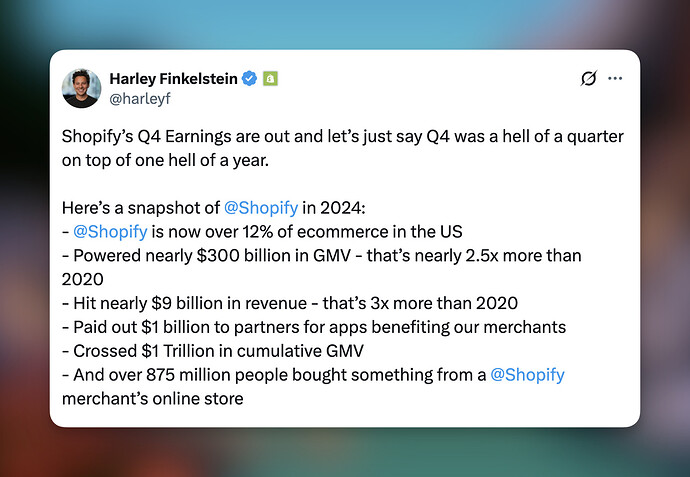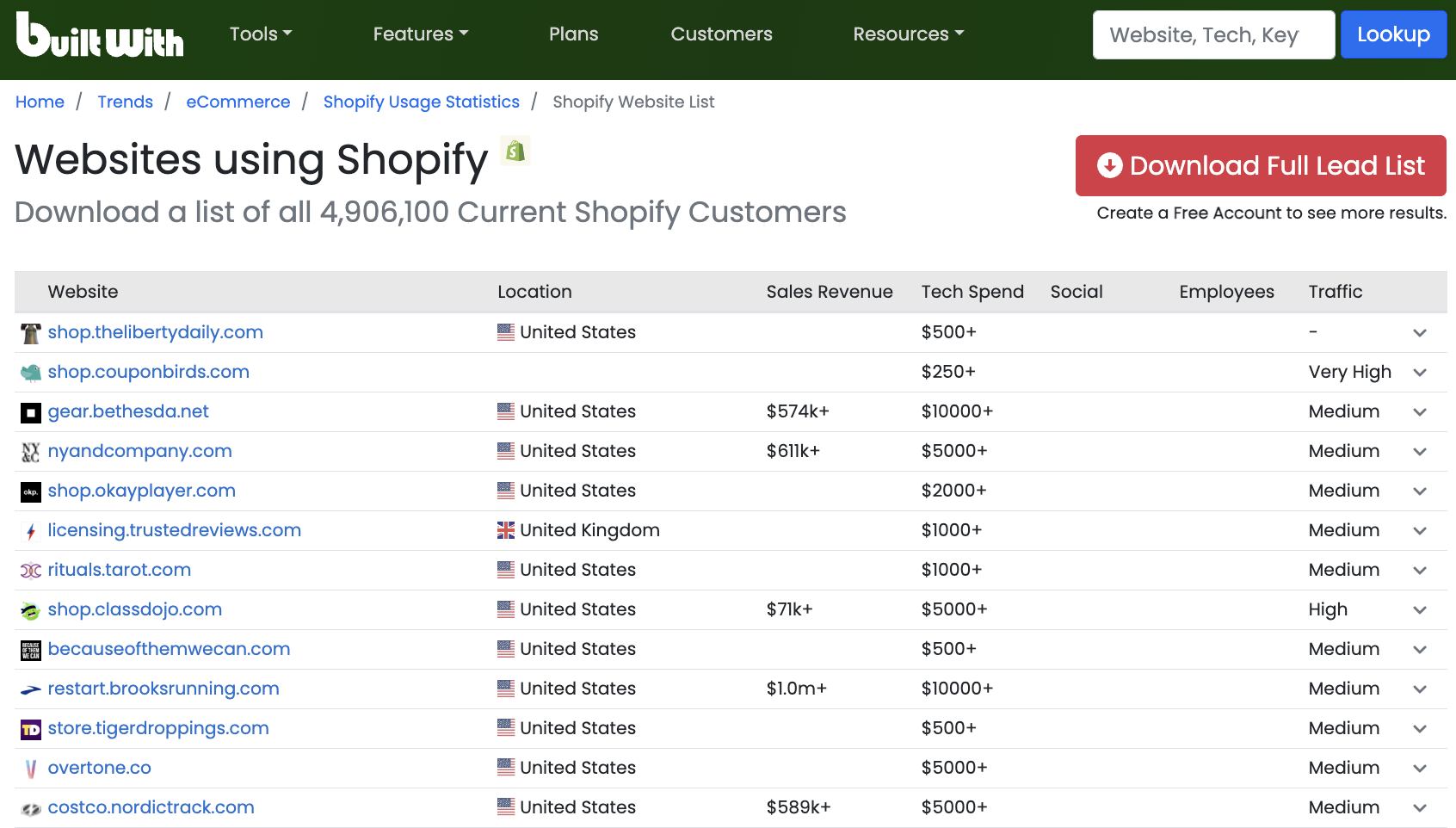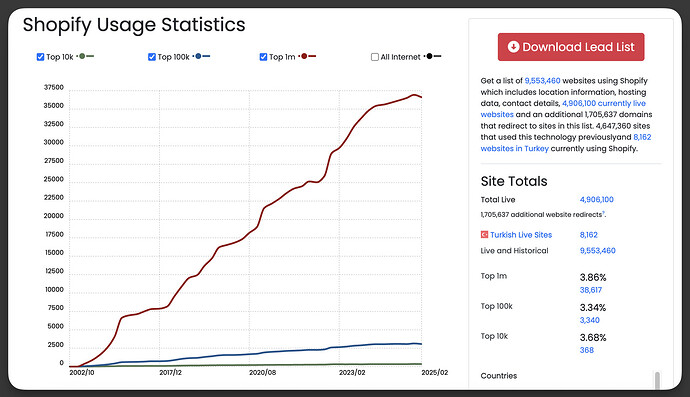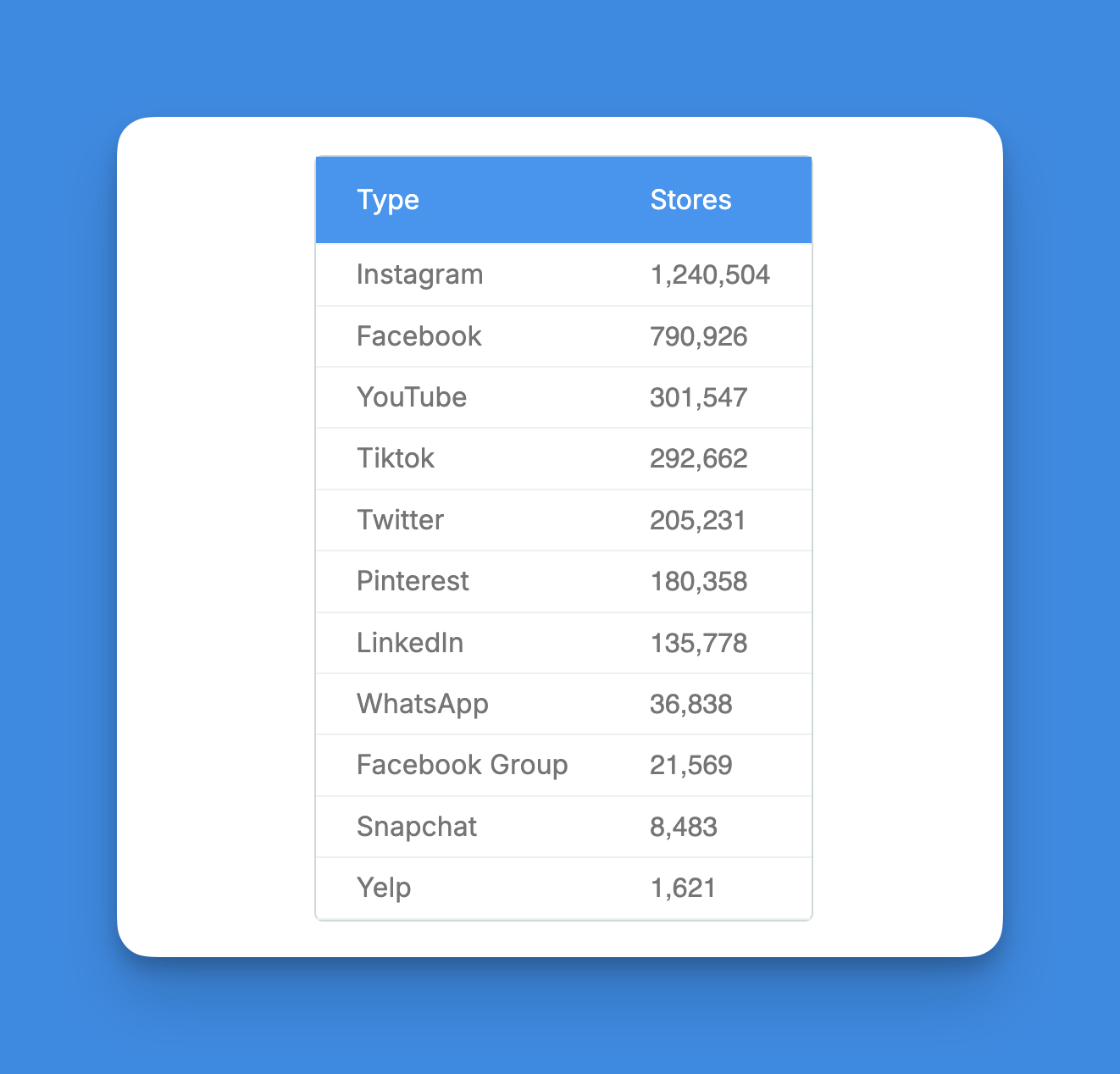honestly surprised no one’s mentioned this yet  because some of the Shopify statistics about market share are super eye-opening.
because some of the Shopify statistics about market share are super eye-opening.
Shopify Market Share in 2025: Global & U.S. Breakdown


Shopify is now one of the top ecommerce platforms in the world—by both store count and gross merchandise volume (GMV).
According to Statista, Digital Commerce 360, and Fabrikator, here is a simple table that show shopify market share:
| Region |
Platform Share by Usage |
Rank |
| Global |
~10% |
#4 |
| U.S. (by usage) |
~29–30% |
#1 |
| U.S. (by GMV) |
~12% of total U.S. ecommerce |
#2 (after Amazon) |
| Canada |
~30% |
#1 |
| U.K. |
~21% (tied with Woo) |
#1–2 |
| Germany |
~24% |
Top 3 |
| Australia |
Leader (fragmented market) |
#1–2 |
TL;DR: Shopify is the default for serious brands in the U.S., and it’s climbing fast in Europe and APAC too.
 Shopify vs Competitors (2025)
Shopify vs Competitors (2025)
Let’s talk competitive landscape—because Shopify isn’t just fighting WooCommerce anymore.
According to MobiLoud, Digiteon, and Digital Commerce 360;
| Platform |
Market Position |
Notes |
| WooCommerce |
~23% globally (#1 by site count) |
Many small/DIY stores |
| Squarespace |
~20.5% U.S. |
Simple setup, service-oriented |
| Wix |
~18.3% U.S. |
Affordable, for smaller sellers |
| BigCommerce |
<2% globally |
Mid-market, 55k+ stores |
| Magento |
~3% globally |
Enterprise legacy, shrinking |
| Amazon |
N/A (marketplace) |
Shopify’s biggest GMV rival |
Shopify’s edge? It’s a full ecosystem: scalable, modern, and built for DTC brands that want control.
 Shopify Growth Over 5 Years (Stats Table)
Shopify Growth Over 5 Years (Stats Table)
According to MobiLoud, Digiteon, and Digital Commerce 360; Here’s how Shopify has exploded in just half a decade:
| Year |
GMV ($B) |
Estimated Merchants |
U.S. GMV Share |
| 2018 |
$41B |
~600k |
~5% |
| 2020 |
$119B |
~1.7M |
~10% |
| 2021 |
$175B |
~2.06M |
~11% |
| 2024 |
$293B |
~2.5M+ (est.) |
~12% |
| 2025 |
$300B+ (projected) |
Still growing |
Likely still rising |
Shopify’s GMV grew 2.5× in 4 years—while becoming the go-to platform for scaling brands.
Shopify Data: Market Share and Merchant Value
A few stats I always keep in my back pocket when someone asks “Why Shopify?”:
- Over 4.9 million live Shopify stores (BuiltWith, 2025)
- ~12% of all U.S. ecommerce sales flow through Shopify
- Shopify now powers 117 of the top 2000 retailers in North America
- Average Shopify merchant is more product-focused, higher value than WooCommerce or Squarespace users
Also: a lot of merchants migrate to Shopify from WooCommerce, Magento, etc. every quarter. That says a lot.
 Shopify Is Built to Scale
Shopify Is Built to Scale
Platforms like Wix or Squarespace are solid for service providers and portfolios. But for product-focused brands? Shopify’s the one you stick with as you grow.
Even from my end—running a two-person brand—Shopify’s tools have helped us feel “bigger” without going custom. We use:
- Shopify Payments (64% of GMV now flows through it)
- Shop Pay (faster checkouts = better conversion)
- Popupsmart for lead capture & AI-generated popups (1 prompt = full popup
 )
)
- Klaviyo, reviews, bundles—you know the stack
The Shopify statistics speak for themselves:
- It’s the #1 ecommerce platform in the U.S.
- It’s #2 globally in sales (just behind Amazon)
- It’s grown consistently in every market
- And its tools are getting better every year—especially with AI and B2B
If you’re picking a platform in 2025, it’s not just about features—it’s about momentum. And Shopify has it. 
Let me know if you need a comparison of platform fees or take rates—I’ve got those tracked too.




